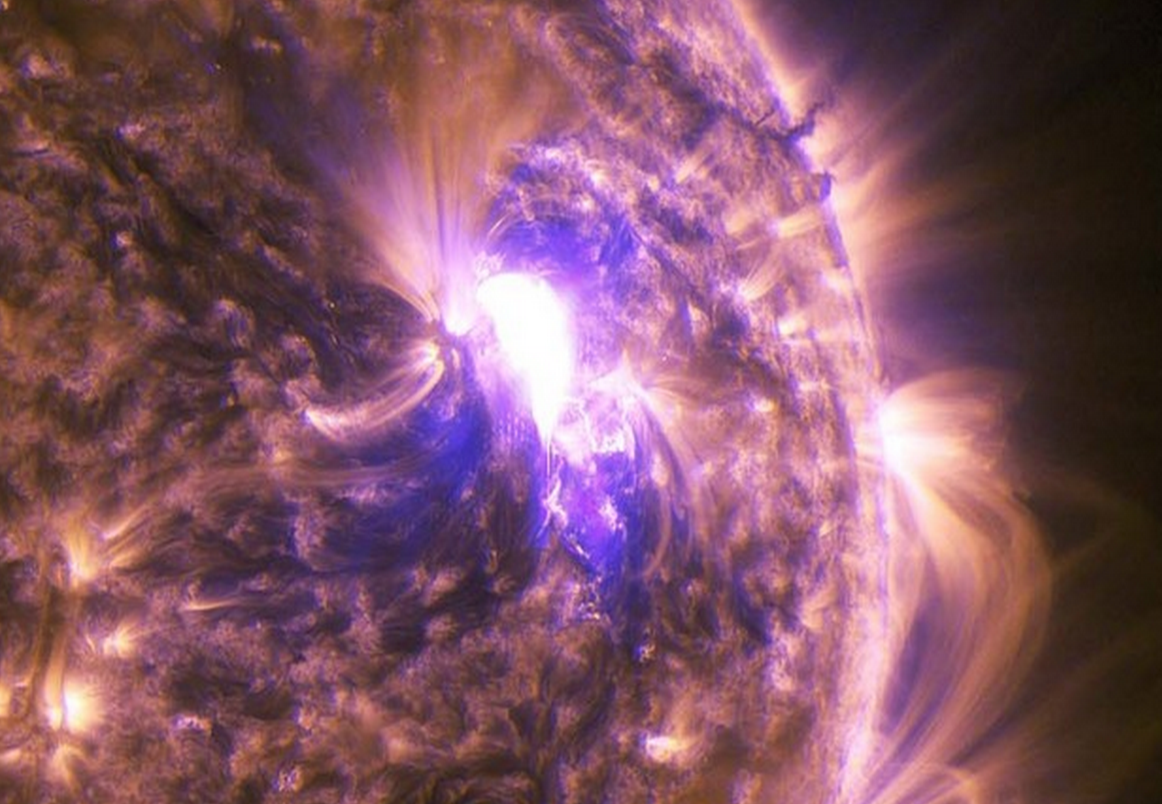
Damaging electric currents in space affect Earth’s equatorial region, not just the poles
Brett Carter, Boston College and Alexa Halford, Dartmouth College
The Earth’s magnetic field – known as the “magnetosphere” – protects our atmosphere from the “solar wind.” That’s the constant stream of charged particles flowing outward from the sun. When the magnetosphere shields Earth from these solar particles, they get funneled toward the polar regions of our atmosphere.
As the particles crash into the atmosphere’s ionospheric layer, light is given off, creating beautiful multicolored displays of aurora near both the North and South Poles. These are stunning visual representations of the complex interactions in the near-Earth space environment, which we collectively term “space weather.”

Alexa Halford, CC BY-ND
The same space weather that generates these beautiful displays can cause havoc for a wide range of technologies. We’ve known for a while that space weather in high-latitude regions near the poles can cause power grid failures, sometimes causing heavy damage. The most famous instance was the March 1989 blackout in the Northeastern US and up through Quebec, Canada that left millions without power for 12 hours.
But we haven’t thought of equatorial regions as being prime targets. Our new research shows that areas closer to the equator still experience bad space weather – and its disturbing effects on power grid infrastructure.
Changing magnetic fields crank up electric currents
High above the ground in the upper atmosphere are fluctuating electric currents driven by interactions in the magnetosphere and ionosphere. These atmospheric currents cause strong changes in the strength of the local magnetic field on the ground. We can’t feel the magnetic field ourselves, but researchers measure and track it at various points on the Earth’s surface.
Endawoke Yizengaw, CC BY-ND
That’s all well and good. The problem comes in when these atmospheric currents cause swift changes in the magnetic field. When the magnetic field abruptly changes, it can generate electric currents in conductors at the Earth’s surface – for instance, long pipes or wires such as oil and gas pipelines or power transmission lines. This process of electric current generation is called magnetic induction.
These electric currents are not-so-creatively called geomagnetically induced currents, or GICs for short. The high-latitude regions are most susceptible to GICs because of the intense electric currents flowing through the auroras, thanks to the way the solar wind gets diverted when it hits the Earth’s magnetosphere. However, the entire planet can be affected to varying degrees.
When they occur, GICs effectively generate extra electric current in power grid infrastructure through magnetic induction. Power grids, during large events, can end up taking on more electricity than they can handle. These induced currents have caused numerous equipment failures that have led to power outages for large populations.

Trouble at the equator too, not just near the poles
Those same geomagnetically induced currents that happen in the high-latitude regions can happen around the equator of our planet too. There, they are caused not by the auroral electric current system we find near the poles, but by a weaker low-latitude counterpart called the equatorial electrojet. Like the high-latitude ionospheric current system, the equatorial electrojet’s electric current can be detected on the ground using magnetic field observations.
Recently researchers reported that GIC activity is enhanced at the equator during severe geomagnetic storms – that’s when solar eruptions called “coronal mass ejections” trigger shock waves that hit the Earth. They pointed the finger at the equatorial electrojet as a suspected cause.
In our new research article in Geophysical Research Letters, we show that countries near the magnetic equator are more vulnerable to space weather than previously thought.
Rather than focusing on severe geomagnetic storms, such as the 2003 Halloween event that caused power grid problems in Sweden (among many other things), we took a different tack. Our analysis focused on the arrival of interplanetary shocks. These are abrupt pressure increases in the solar wind – that stream of plasma constantly flowing out of the sun. When these shocks hit the Earth’s magnetosphere, the impact causes a sudden magnetic field change that can be measured all over the world.
Interplanetary shocks regularly announce the beginning of a geomagnetic storm. But many pass by relatively benignly without developing into a full-blown geomagnetic storm. We noticed that the magnetic response to these shock arrivals was sometimes significantly stronger at the magnetic equator when compared to locations only a few degrees away. Why?
An analysis of how these equatorial responses differed throughout the day revealed they were strongest around noon and weakest at night. This daily contrast corresponds to the well-known variations in the equatorial electrojet. It’s strong evidence that the equatorial electrojet is amplifying the geomagnetically induced current activity during interplanetary shock arrivals in a way that hasn’t really been recognized until now.

Ken Doerr, CC BY
Effects on equatorial power grids
This result has significant implications for the many countries located beneath the equatorial electrojet that may be operating power infrastructure not initially designed to cope with space weather. These countries need to look into ways of protecting their infrastructure during geomagnetically quiet periods as well as during severe geomagnetic storms.
One of our coauthors, Dr Endawoke Yizengaw from Boston College, grew up in Ethiopia, within the equatorial electrojet’s region of influence. He recalls regular unexplained power outages during his childhood and wonders whether interplanetary shocks may have played a role. We hope to be able to answer this question in the near future.
Scientists around the world are conducting ongoing research to better understand the effects of these geomagnetically induced currents on power grids. It’s becoming increasingly clear that we need to investigate the effects of quiet periods, not just major events. What happens during these quiet times, and in regions often overlooked, can have a significant impact on our increasingly technology-dependent society.
![]()
Brett Carter is Research Scientist in Space Weather and Ionospheric Physics at Boston College and Alexa Halford is Postdoctoral Research Associate in Physics and Astronomy at Dartmouth College
This article was originally published on The Conversation. Read the original article.




















